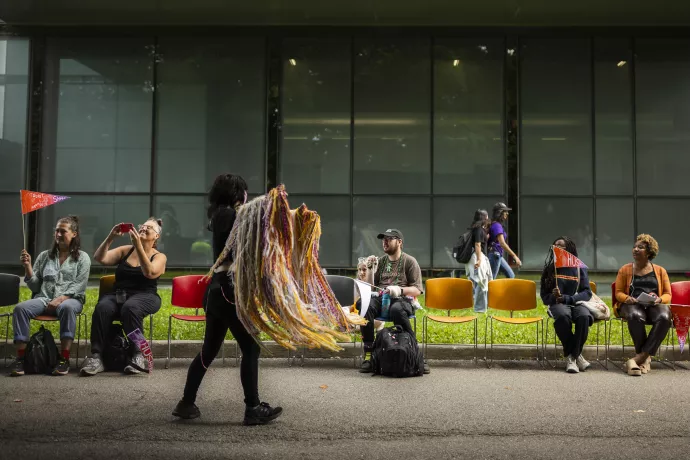
Experiments in art and accessibility: Quiet Parade comes to UTM
It had all the hallmarks of a traditional parade — floats, banners, excited spectators and plenty of colourful costumes — but with a crucial difference: the midday spectacle on University of Toronto Mississauga campus came and went with scarcely a sound.
The Quiet Parade, commissioned by The Blackwood Gallery and curated by Ellyn Walker, aimed to provide a sensory-friendly, float-based performance art piece that incorporated more than two dozen artistic groups and individuals.
“The Quiet Parade grew out of my own lived experience,” says Aislinn Thomas, the lead artist. “I am disabled. I describe myself as a person who thrives in low-stimulation environments." A lot of Thomas's impairments are acquired, which she says makes it difficult to attend loud, crowded public gatherings the way she did in the past. "I used to be able to attend parades. I love parades. I miss them,” she says. “A few years ago, I started dreaming about possibilities for public gatherings that I could attend and that people who have similar access needs could attend and experience this sense of coming together and celebration and joy.”
Along the route were three accessibility stations including a low-sensory "chill zone" environment, a visual description zone and a "loud zone" for those who wanted to make noise. ASL interpretation guides were also available. Arts and disability advocate Kat Germain offered provide live visual translation, also known as audio description, outside Deerfield Hall. During the parade, attendees sat near her tent and used the supplied earpieces to listen to Germain’s live audio description, which was also livestreamed on Blackwood’s Instagram account.
Scroll down for photos and a video of the event.
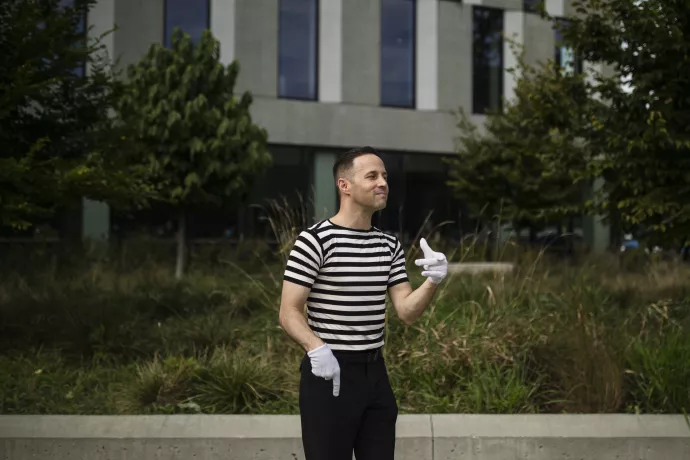
Trevor Copp, a mime dressed in traditional white and black, set the tone for quiet celebration and mutual care. In his role as Parade Marshall, Copp used mime to lead the parade’s moving 14 floats on a route through campus that also included three stationary art displays.
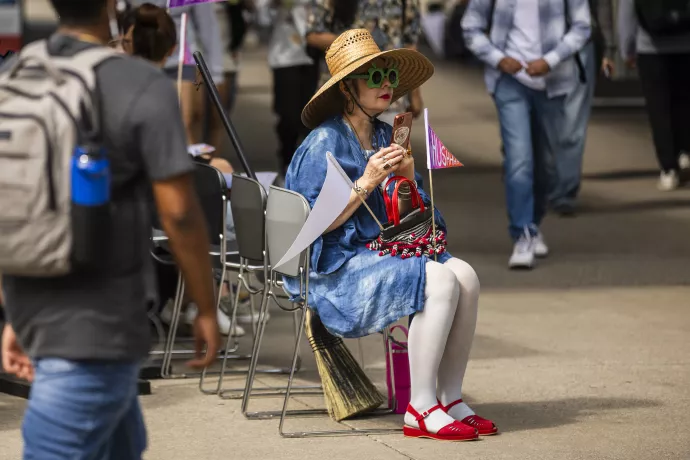
All were invited to attend the free on-campus event, and hundreds did. Visitors from outside the UTM community joined students, staff, librarians and faculty as watchers and participants. Shuttle buses from Keele TTC Station were available to bring in spectators from Toronto. Chairs set up along the parade route invited attendees to sit and watch the event unfold.
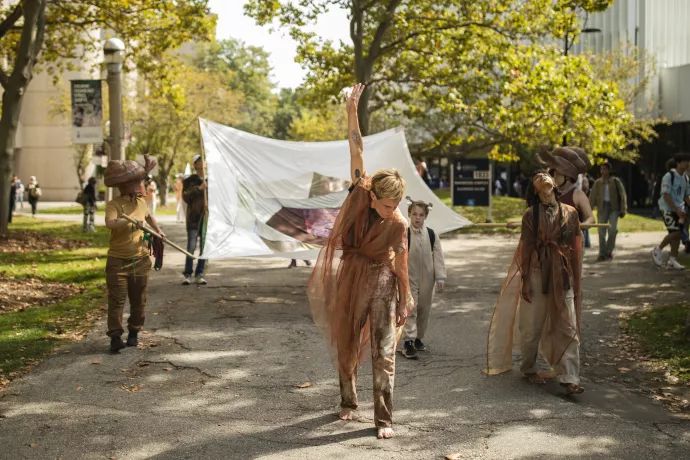
Organizers noted that the Quiet Parade experiments with unconventional approaches to celebration and accessibility.
The New York-based FlagSSS Day Collective’s slow-moving flag corps used gentle, snail-inspired movements for its "Slowcore Snail Flag Corps" float.
The parade followed a roughly circular route through the five-minute walk, then winding past the student centre, Erindale Hall, Deerfield Hall, Maanjiwe nendamowinan, Instructional Centre and the Library, ending in the Communication, Culture & Technology courtyard.
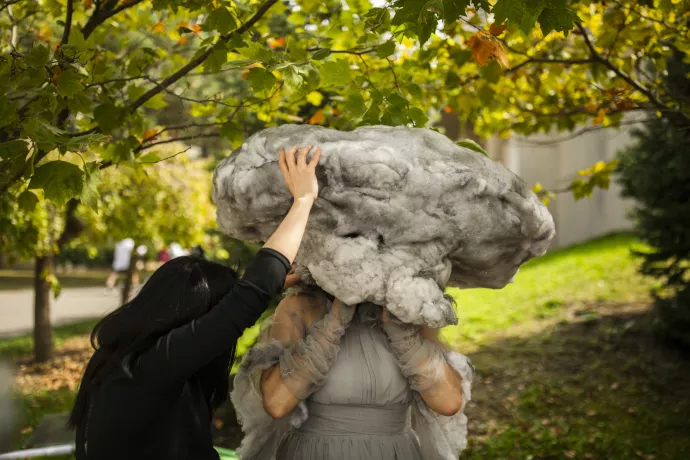
Students attending Fall 2024 Orientation as well as members of the public were offered opportunities to get involved prior to the parade: a series of workshops this month guided participants in making stim toys and banners along with instruments repurposed from household materials such as tin cans and cardboard tubes. The instruments — and many of their makers — formed part of the “Parade On Your Rain” float led by Rhonda Weppler and Trevor Mahovsky, who reimagined a marching band as a slow, quietly moving rainstorm.
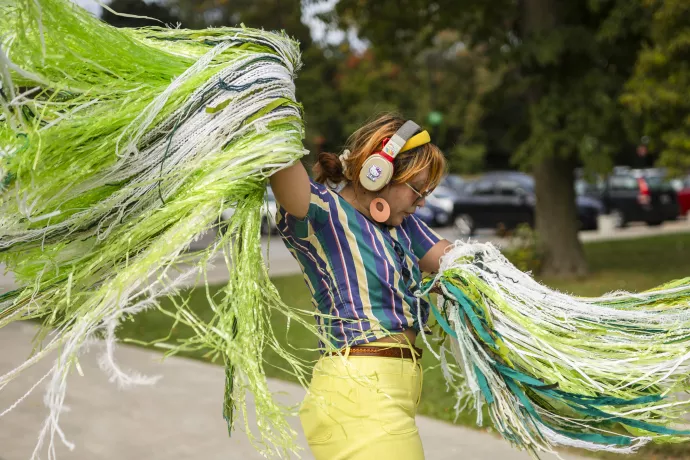
Performers led by interdisciplinary artist Sof Kreidstein celebrate neurodivergent expression through colourful, multi-textured garments and stim toys.
Like many of the floats, Kreidstein’s “In Touch / In Motion" was interactive, with performers distributing handmade stim toys.
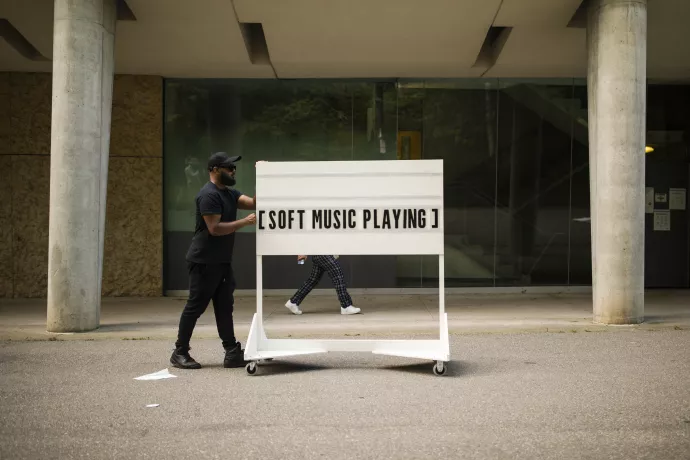
While some floats featured a low-volume audio component, artist and UTM design instructor Atanas Bozdarov’s "Approximate Descriptions" project described the audio. A letter-changing marquee sign on wheels showcased descriptive captions of instrumental and background music selected from movies and TV shows. With the sign, which gradually changed throughout the event, Bozdarov aimed to translate auditory experiences into visual narratives while celebrating accessibility.
“I think the goal of Quiet Parade is to experiment with new forms of accessibility, knowing that we never can create something that's fully accessible but that we can try,” says Thomas, who organized the first Quiet Parade in 2022 in Halifax. “We can learn with every iteration. We’re excited to experiment.”
Below, Aislinn Thomas describes the Quiet Parade:
